Godłowski Kazimierz
Kazimierz Godłowski, Polish archaeologist (Fig. 1-3), professor of the Jagiellonian University, one of the most outstanding scholars of the Roman Period and the →Migration Period in the central and the northern →Barbaricum.
Born on 9 December 1934 in Cracow, died on 9 July 1995 in Kraków the future professor came from a family of doctors. His father – Włodzimierz - a neurologist and psychiatrist, was murdered at Katyń; his mother – Zofia – was a laryngologist.
His entire professional life Professor Kazimierz Godłowski was associated with the Jagiellonian University. In 1951 he entered this university to join a course then described as the “History of Material Culture”. One of his teachers was Professor Rudolf Jamka, then Head of the Chair of Archaeology. In 1955 Kazimierz Godłowski defended his master’s thesis, a reconstruction of prehistoric societies in Poland of the Late La Tène and the Roman Period using the results from the analysis of evidence from grave inventories (see Publications). He obtained a PhD in humanities for his dissertation on →Przeworsk Culture settlement in the Upper Silesia region (see Publications). From 1956 until the 1980s he dedicated himself to excavating →Przeworsk Culture sites in region on the Liswarta River: the grave-sites at Opatów, Rybno, Waleńczów and Żabieniec and the settlement at Wąsosz Górny. Of special significance for the direction of his subsequent studies were the results from a series of excavation projects focused on the extensive and long-lived burial ground at Opatów, a site with an exceptionally well-preserved horizontal stratigraphy. The findings from Opatów came to form one of the foundations of the Professor’s studies in the chronology of the Early and the Late Roman Period and the early phases of the →Migration Period in Central Europe (Fig. 4). This research, based largely on mostly unpublished evidence, took in the territory of the →Przeworsk Culture , the →Wielbark Culture and the Luboszyce archaeological cultures, the territory of the Elbian and West Balt culture →Balts complexes, and also, parts of the southern zone of the →Barbaricum outside Poland in Bohemia, Moravia and Slovakia. The fruit of this endeavour was a groundbreaking study The Chronology of the Late Roman and Early Migration Period in Central Europe published in Cracow in 1970 (Fig. 5), to this day a piece of scholarship central for the Roman Period and the Migration Period research. For this paper Kazimierz Godłowski obtained his habilitation from the Jagiellonian University in 1969, which was followed by the title of associate Professor in 1977 and full Professor in 1983. Kazimierz Godłowski published some 200 or so studes in which he addressed all of the pivotal questions related to the Younger Pre-Roman Period, the Roman Period and the early phase of the →Migration Period in the central and the northern →Barbaricum (see Publications). Nevertheless, a special place among his academic interests and achievements, starting with his habilitation work, was taken by the Early and the Late Roman Period and the Migration Period. These interests led him to embark on a study of the original homeland of the Proto-Slavs (Fig. 6) →Slavs , an issue central in the study of the prehistory of the Odra and the Vistula river basin region during Late Antiquity and early medieval period. In this research Kazimierz Godłowski may have been inspired by Professor Kazimierz Moszyński, eminent Polish ethnographer and proponent of the allochthonous (non-local) concept on Slav origins, whose lectures he attended when a student of the Jagiellonian University. In his studies in Slav expansion, AD 5th-7th cc. (Polish title: Z badań nad zagadnieniem rozprzestrzenienia Słowian w V-VII w. n.e.), published in 1979, and in many subsequent scholarly contributions, Professor Kazimierz Godłowski argued convincingly that there was no continuity of settlement and culture in the Odra and the Vistula river basin region in the period between the first centuries AD and the period for which we have solid evidence on the Slav presence on the territory of today’s Poland from the written record. The results of an in-depth analysis of the archaeological evidence also led Kazimierz Godłowski to place the original homeland of the Slavs in the Dnieper basin, which territory since the Early Roman Period was occupied by the →Kiev Culture. In his breakthrough studies on the Slav ethnogenesis the Professor drew on evidence from the written sources, linguistics and nature sciences, not the least, from →Palynology. Incidentally, to promote the allochthonous view in a research community dominated by champions of the so-called neo-autochthonous concept, who wished to see the Proto-Slav homeland on the territory of Poland - a crucial element in the propaganda of the Polish People’s Republic - was to court serious trouble. Kazimierz Godłowski’s interest in the early phases of the →Migration Period is documented further by other publications, more notably, a study of archaeological cultures documented during this chronological period in the region of Pomerania (1979; 1980; 1981 – see Publications) and in the north-eastern corner of Poland (1974). In 1982 the Professor dedicated himself to the investigation of the multiphase settlement at →Jakuszowice (site 2) in western Lesser and continued running the digs there almost until the last months of his life. The largest and the most interesting group of finds from Jakuszowice, more notably, the large number of Roman imports and finds documenting various production activities, may be attributed to →Przeworsk Culture occupation during the Early and the Late Roman Period and the early phase of the Migration Period. The settlement at Jakuszowice lies close to the site of the discovery, made accidentally in 1911, of an elite grave dated to the first half of the 5th, with grave goods that intimate direct ties of the buried individual to the nomad environment; the youngest occupation level of the Jakuszowice settlement is contemporary with this burial. Professor Kazimierz Godłowski succeeded in publishing a part of his findings from Jakuszowice and re-examining the inventory of the elite grave and refining its chronological position (see Publications).
Next to these pursuits Professor Kazimierz Godłowski was actively involved in the life of his home University and of the research community in Poland and abroad. In 1972-1975 he served as the Deputy Dean of the Philosophy and History Faculty, in 1976-1990 - as the Head of the Institute of Archaeology. He was a member of many scholarly institutions, more notably, of the Polish Academy of Learning, German Archaeological Institute (DAI) and the Bavarian Academy of Sciences (BAdW). He lectured at universities outside Poland, e.g., in Vienna, and shared many interests and projects with his friend, Joachim Werner, another eminent Roman Period and Migration Period researcher. Kazimierz Godłowski was also active in the public sphere and politics joining in the activities of the “Solidarity” at the Jagiellonian University and helping to found the Katyń Institute.
Judyta Rodzińska-Nowak
Publications:
- Studia nad stosunkami społecznymi w okresach późnolateńskim i rzymskim w dorzeczu Odry i Wisły. Próba interpretacji cmentarzysk, Biblioteka Archeologiczna 13, Warszawa-Wrocław 1960.
- Wymiana handlowa ludności kultury przeworskiej na Górnym Śląsku z imperium rzymskim, Archeologia 16, 1965, p. 28-62.
- Kultura przeworska na Górnym Śląsku, Kraków 1969.
- The Chronology of the Late Roman and Early Migration periods in Central Europe, Zeszyty Naukowe Uniwersytetu Jagiellońskiego 217, Prace Archeologiczne 11, Kraków 1970.
- Materiały do poznania kultury przeworskiej z obszaru Górnego Śląska, część I, Materiały Starożytne i Wczesnośredniowieczne 2, 1973, p. 255-382.
- Chronologia okresu późnorzymskiego i wczesnego okresu wędrówek ludów w Polsce północno-wschodniej, Rocznik Białostocki 12, 1974, p. 8-110.
- Zagadnienie ciągłości kulturowej i kontynuacji osadniczej na ziemiach polskich w młodszym okresie przedrzymskim, okresie wpływów rzymskich i wędrówek ludów, Archeologia Polski 21/2, 1976, p. 378-401.
- Materiały do poznania kultury przeworskiej na Górnym Śląsku, część II, Materiały Starożytne i Wczesnośredniowieczne 4, 1977, p. 7-237.
- Okres lateński w Europie, Kraków, 1977.
- Z badań nad zagadnieniem rozprzestrzenienia Słowian w V-VII w. n. e., Kraków 1979.
- Die Völkerwanderungszeit in Pommern, Archaeologia Baltica 4, 1979, p. 3-83.
- Przemiany zasiedlenia na Wyżynie Głubczyckiej i w dorzeczu Liswarty w okresie lateńskim, rzymskim i początkach wczesnego średniowiecza, Archeologia Polski 25/1, 1980, p. 131-166.
- Zur Frage der völkerwanderungszeitlichen Besiedlung in Pommern, Studien zur Sachsenforschung 2, Hildesheim 1980, p. 63-106.
- Kultura przeworska, [in:] J. Wielowiejski (ed.), Późny okres lateński i okres rzymski, Prahistoria Ziem Polskich V, Wrocław – Warszawa – Kraków – Gdańsk 1981, p. 57-135.
- Okres wędrówek ludów na Pomorzu, Pomorania Antiqua 10, 1981. p. 65-129.
- Północni Barbarzyńcy i wojny markomańskie w świetle archeologii, [in:] J. Wielowiejski (ed.), Znaczenie wojen markomańskich dla państwa rzymskiego i północnego Barbaricum, Scripta Archaeologica 2, Warszawa 1981, p. 48-80.
- Człowiek i środowisko w okresie lateńskim, rzymskim i wędrówek ludów, [in:] J. K. Kozłowski, S. K. Kozłowski (eds.), Człowiek i środowisko w pradziejach, Warszawa 1983, p. 286-308.
- Przemiany osadnicze i kulturowe w południowej i środkowej Polsce młodszym okresie przedrzymskim i okresie rzymskim, Prace Komisji Archeologicznej Polskiej Akademii Nauk – Oddział w Krakowie nr 23, Wrocław – Warszawa – Kraków – Gdańsk –Łodź 1985.
- Der römische Handel in die Germania libera aufgrund der archäologischen Quellen, [in:] Untersuchungen zu Handel und Verkehr der vor- und frühgeschichtlichen Zeit in Mittel – und Nordeuropa. Teil I, Abhandlungen der Akademie der Wissenschaften in Göttingen, Philologisch-Historische Klasse Dritte Folge Nr. 143, Göttingen 1985, p. 337-366.
- Jakuszowice, eine Siedlung der Bandkeramik, älteren Bronzezeit, jüngeren vorrömischen Eisenzeit, römischen Kaiserzeit und der frühen Völkerwanderungszeit in Südpolen, Die Kunde, N.F. 37 1985, p. 103-132.
- Jakuszowice, Woiwodschaft Kielce, Gemeinde Kazimierza Wielka (Siedlung der Bandkeramik, Trzciniec-Kultur, Przeworsk-Kultur und des Mittelalters), Recherches Archéologiques de 1984, Kraków 1985, p. 23-34.
- Problemy chronologii okresu rzymskiego, [in:] Scripta Archaeologica (Materiały z sesji naukowej poświęconej pamięci prof. dr hab. Rudolfa Jamki), Warszawa-Kraków 1988, p. 27-49.
- Jakuszowice – a multi-period settlement in southern Poland, Antiquity 65, nr 248, Cambridge 1991, p. 662-675.
- Die Chronologie der jüngeren und späten Kaiserzeit in den Gebieten südlich der Sudeten und Karpaten, [in:] K. Godłowski, R. Madyda-Legutko (eds.), Probleme der relativen und absoluten Chronologie ab Latènezeit bis zum Frühmittelalter, Materialien des III. Internationalen Symposiums: Grundprobleme der frühgeschichtlichen Entwicklung im nördlichen Mitteldonaugebiet, Kraków-Karniowice 1990, Kraków 1992, p. 23-54.
- Zmiany w uzbrojeniu ludności kultury przeworskiej w okresie wpływów rzymskich, [in:] Arma et Ollae, Studia dedykowane Profesorowi Andrzejowi Nadolskiemu w 70 rocznicę urodzin i 45 rocznicę pracy naukowej, Łódź 1992, p. 71-88.
- Die Barbaren nördlich der Westkarpaten und das Karpatenbecken – Einwanderungen, politische und militärische Kontakte, Specimina Nova, Miskolc 1994, p. 65-89.
- Okres lateński i rzymski, [in:] Natura i kultura w krajobrazie Jury. Pradzieje i średniowiecze, Kraków 1995, p. 113-136.
- Die ältere Kaiserzeit in der Umgebung von Kraków [in:] J. Tejral, K. Pieta, J. Rajtár (eds.), Kelten, Germanen, Römer im Mitteldonaugebiet vom Ausklang der Latène-Zivilisation bis zum 2. Jahrhundert, Brno-Nitra 1995, p. 83-102.
- Das "Fürstengrab" des 5. Jhs. und der "Fürstensitz" in Jakuszowice in Südpolen, [in:] F. Vallet, M. Kazanski (eds.), La noblesse romaine et les chefs barbares du IIIe au VIIe siécle, Mémoires A.F.A.M. 9, Condé-sur-Noireau 1995, p. 155-180.
- Rzadki import rzymski z IV w. z Jakuszowic [in:] A. Bursche, M. Mielczarek, W. Nowakowski (eds.) Nvnc de Svebis dicendvm est, Studia dedykowane profesorowi Jerzemu Kolendo w 60-lecie urodzin i 40-lecie pracy naukowej, Warszawa 1995, p. 129-135.
- Pierwotne siedziby Słowian. Wybór pism pod redakcją Michała Parczewskiego, Kraków 2000.
-
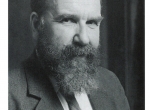 full resolution
full resolution
Fig. 1.
-
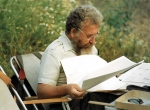 full resolution
full resolution
Fig. 2.
-
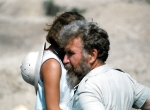 full resolution
full resolution
Fig. 3.
-
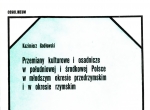 full resolution
full resolution
Fig. 4.
-
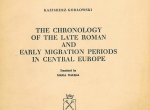 full resolution
full resolution
Fig. 5.
-
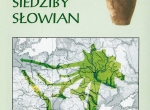 full resolution
full resolution
Fig. 6.


